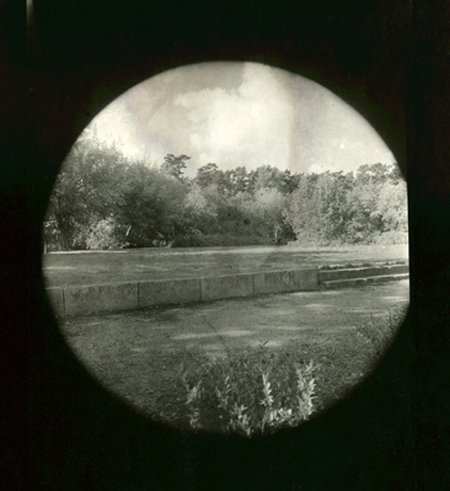23 Minutes in the Emptiness: Onutė Narbutaitė’s Digital Single
- June 21, 2017
A photograph by Gintautas Trimakas was chosen for the cover of Onutė Narbutaitė’s album. The photograph shows the artist Elena Narbutaitė’s site-specific installation Location Piece, created in the summer of 2007 in the context of the Thomas Mann Festival in Nida. Even though the composer suggests that not too much meaning should be given to the name In the Emptiness but it does connect her composition, Elena Narbutaitė’s conceptual artistic act and Gintautas Trimakas’s photograph since they all come into contact with the phenomenon of emptiness through a structural, conceptual or aesthetic expression.
In the same way as the composer looked for an empty shelf in the overfilled library of piano repertoire, the artist Elena Narbutaitė looked around for an abandoned and secluded spot in Nida which she could conceptualize. She found some empty foundations in the yard of a guest house on the shores of the Couronian Lagoon, removed the weeds, tidied the spot up, discarded anything that she deemed unnecessary and opened the foundations up to a new experience. Soon after that, Gintautas Trimakas captured the scene on his camera. Later these foundations completely disappeared from the landscape of Nida.
It would seem that everything in the composer’s work has also been cleaned to the very foundations with a reduced language of sounds, the dominance of empty intervals, a transparent texture, and a polished form. Emptiness, according to Onutė Narbutaitė, next to all the developed philosophical, existential and psychological categories, can simply be an empty space where anything can appear. Sounds or actions can open up emptiness and at the same time fill it.
The essayist Edmundas Gedgaudas writes: ‘In the Emptiness does not fit into any musical genre: the sounds, and the no less important pauses, become indescribable ‘conversations without words’, with the boundaries between the author, the performer and the listener fading or completely disappearing. And not only that – the composition’s components can become various manifestations of nature, the light and architecture in harmony with one another. The wind, the murmuring of the rushes of the Couronian Lagoon, the rustling forest, the calls of swallows in the early evening by the small church in Nida, the ribbed vaulting, supported by eight-cornered piers, of the Church of St. Nicholas in Vilnius, the oldest surviving church in Lithuania, older than Mozart’s prayer… Or – there is only emptiness and the piano unexpectedly becoming a part of the listener’s solitude and reading his or her thoughts. Like a confession?’.
Translated from the Lithuanian by Romas Kinka
The digital release can be ordered here.
